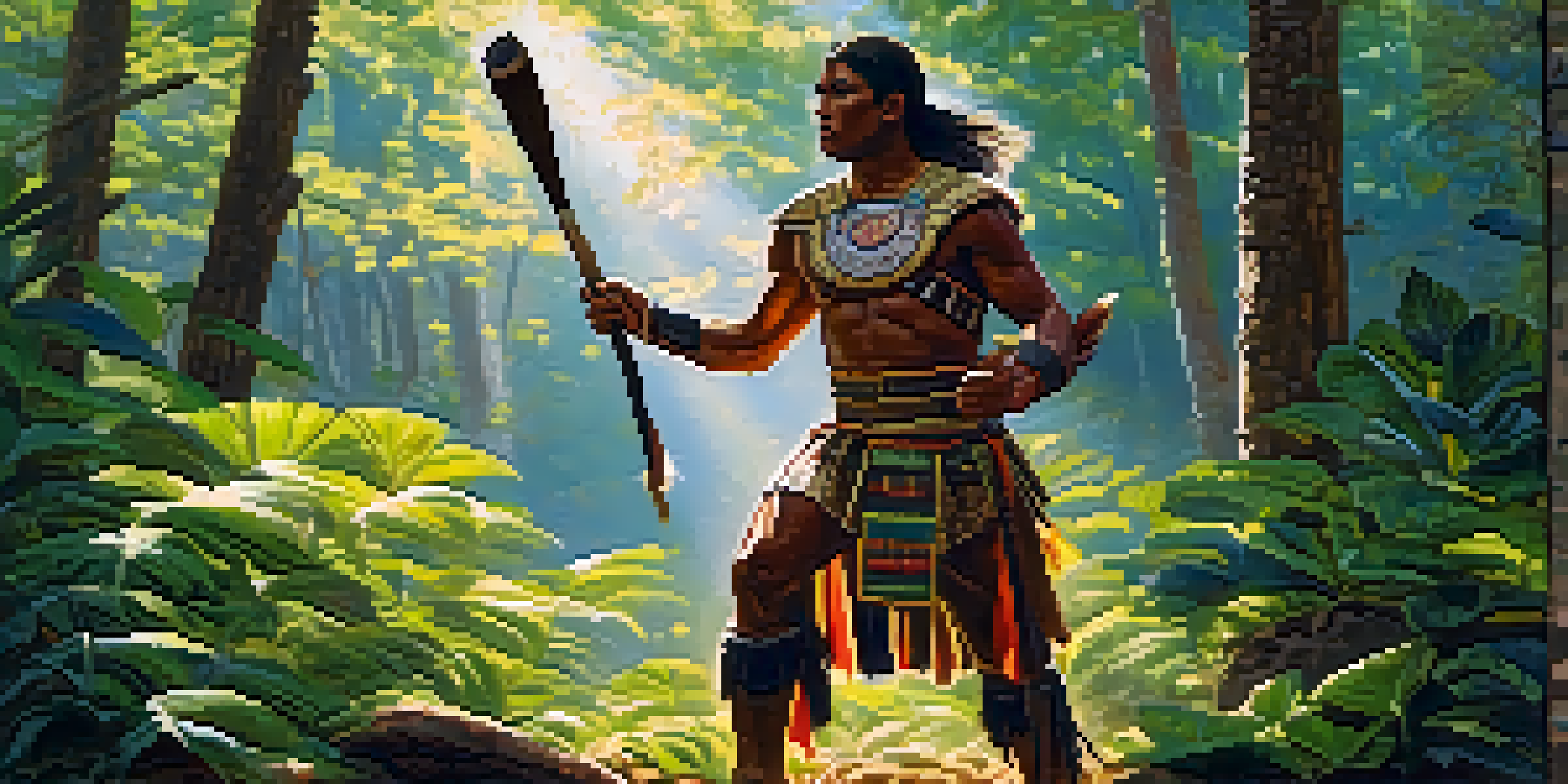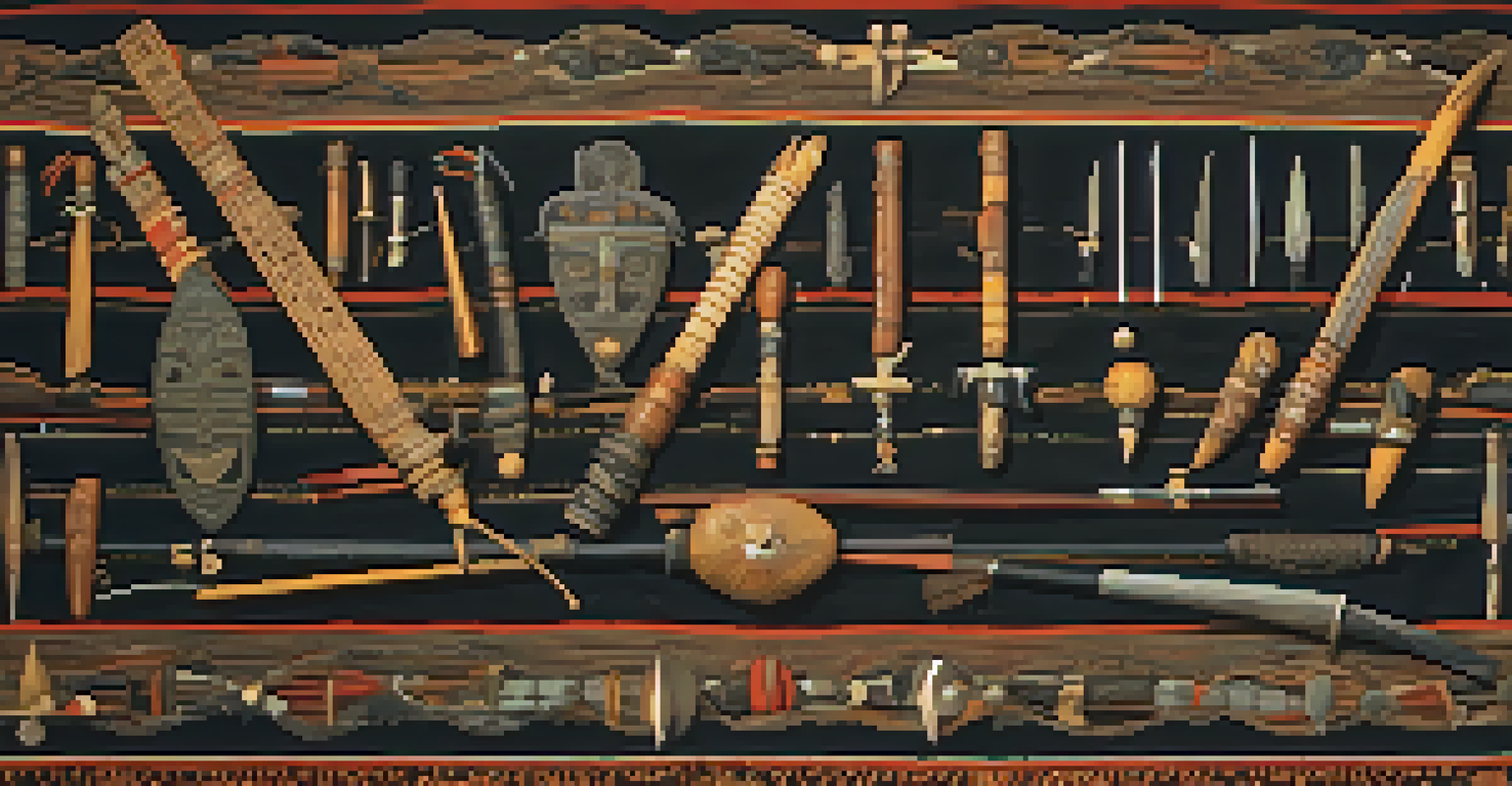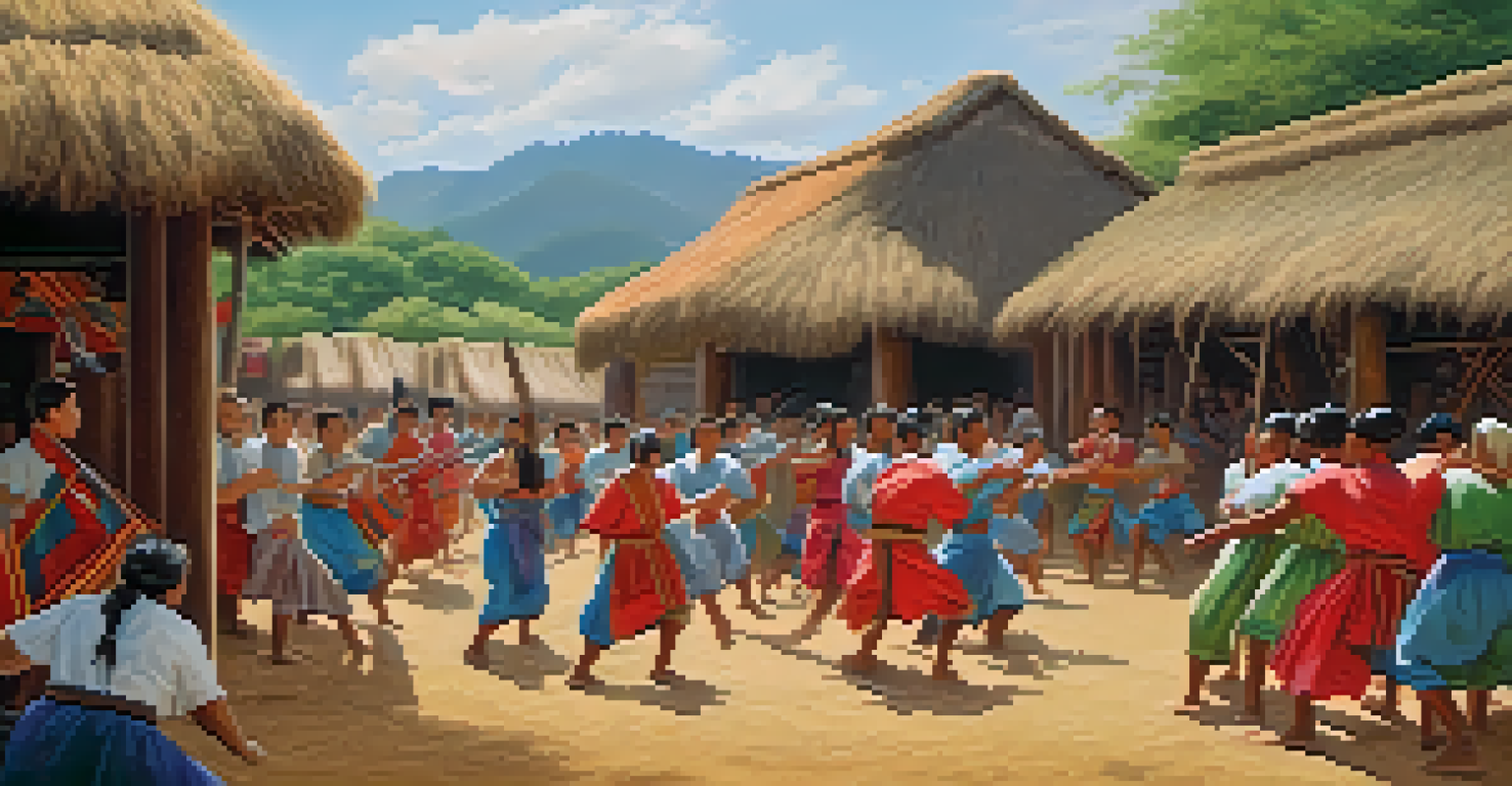Self Defense in the Ancient Americas: Traditions and Techniques

Understanding Self Defense in Ancient American Societies
Self defense in ancient Americas was not just about physical combat; it was also about cultural beliefs and values. Various societies developed unique methods to protect themselves against threats, whether from rival tribes or wild animals. These techniques often reflected the community's social structure and spiritual beliefs, showcasing how survival was intertwined with identity.
The greatest warrior is not the one who fights the most battles, but the one who fights for their community.
For many ancient civilizations, such as the Aztecs and the Maya, self defense was deeply ingrained in their way of life. They believed that mastering combat skills was vital for both personal safety and the protection of their communities. This belief fostered a culture where fighting skills were not only respected but celebrated, often being passed down through generations.
Moreover, knowledge of self defense was often linked to the rites of passage for young warriors. Training in these techniques was not merely physical; it included lessons about courage, honor, and the responsibilities that came with wielding weapons. As such, self defense was a critical component of their cultural heritage.
Common Weapons Used in Ancient Self Defense Techniques
Ancient American societies utilized a variety of weapons for self defense, each tailored to their environment and combat needs. For instance, the Inca relied heavily on slings and wooden clubs, which were effective in their mountainous terrain. These weapons showcased the ingenuity of these cultures, adapting to their surroundings while prioritizing functionality.

The Aztecs, on the other hand, favored weapons like the macuahuitl, a wooden sword embedded with obsidian blades. This weapon was not only deadly but also a symbol of status among warriors. The crafting of such weapons involved intricate skills, reflecting the societal importance of being equipped for self defense.
Cultural Roots of Self Defense
Self defense in ancient American societies was deeply intertwined with cultural beliefs, reflecting community values and spiritual practices.
It's fascinating to note how these tools weren't just for fighting; they often had ceremonial significance as well. Many cultures believed that weapons could carry spiritual power, which made mastering their use a sacred duty. This dual purpose added depth to the practice of self defense, intertwining it with cultural identity and spirituality.
Martial Arts Traditions in Ancient American Cultures
Ancient Americas had their own forms of martial arts, which were as much about discipline as they were about combat. For example, the martial traditions of the Maya included grappling techniques and various strikes, emphasizing agility and strategy over brute strength. This approach mirrored the way they viewed the world—intelligent and resourceful.
Self-defense is not just about protecting oneself; it's about honoring the heritage and values of those who came before us.
Practices often incorporated elements of dance and ritual, making self defense training a holistic experience. For many, honing these skills was akin to art, where movements were fluid and graceful, creating a deep connection between body and spirit. Such traditions fostered a sense of community and belonging among practitioners.
The legacy of these martial arts can still be felt today, as modern interpretations and practices often draw inspiration from these ancient techniques. This continuity highlights the importance of self defense, ensuring that these traditions remain relevant and respected in contemporary society.
The Role of Spirituality in Self Defense Practices
In many ancient American cultures, spirituality played a crucial role in self defense practices. Warriors often invoked the protection of deities before entering battle, believing that their success depended on divine favor. This connection between spirituality and self defense added a profound layer of meaning to their combat training.
Rituals and ceremonies were commonplace, integrating prayers and offerings with physical preparation. These practices reminded warriors of their responsibilities not just to themselves but to their community and ancestors. The spiritual aspect instilled a sense of purpose, reinforcing the idea that defending one's home was a sacred duty.
Weapons and Techniques Evolved
Ancient cultures developed unique weapons and martial arts that were adapted to their environments, emphasizing functionality and ceremonial significance.
Moreover, this intertwining of spirituality and combat helped to cultivate mental resilience. Warriors believed that maintaining a strong spiritual connection could enhance their focus and effectiveness in combat situations. Thus, self defense was as much about mental fortitude as it was about physical ability.
Training Methods for Warriors in Ancient Societies
Training methods for ancient warriors varied widely but often included rigorous physical conditioning and skill drills. Young men and women were taught the basics of combat from an early age, ensuring they were prepared to defend their communities when necessary. This training was often communal, with experienced warriors passing down their knowledge to the next generation.
In addition to physical training, there was a strong emphasis on strategy and tactics. Warriors learned to read their environment and understand their opponents, making them more effective in combat. These lessons were crucial, as they often determined the outcome of conflicts in their harsh and competitive landscapes.
Mentorship played a significant role in this training process. Young warriors would often shadow seasoned fighters, learning not just how to wield weapons but also the ethics of combat. This mentorship fostered a deep respect for the art of self defense, creating a lineage of skilled warriors dedicated to protecting their people.
Self Defense as a Community Responsibility
Self defense in ancient American societies was viewed as a collective responsibility rather than an individual endeavor. Communities understood that their survival depended on the ability of each member to defend against threats. This perspective fostered a sense of unity and cooperation, emphasizing that everyone played a role in ensuring safety.
Training often involved the entire community, with events where skills were practiced and showcased. These gatherings served not only as training opportunities but also as social events, strengthening bonds among community members. The shared experience of learning self defense techniques helped to build trust and camaraderie.
Community-Centric Training Models
Self defense was viewed as a collective responsibility, where training and preparedness were shared within the community to enhance unity and resilience.
This communal approach to self defense also meant that strategies and techniques were continually refined based on collective experiences. As threats evolved, so too did the methods of protection. This adaptability was key to the resilience of these societies, allowing them to thrive despite the challenges they faced.
Legacy and Influence on Modern Self Defense Practices
The self defense techniques and traditions of ancient American cultures have left a lasting legacy that influences modern practices. Many contemporary martial arts still draw upon the principles and tactics developed by these ancient warriors. This connection highlights the relevance of their strategies, even in today's world.
Moreover, the cultural narratives surrounding these techniques continue to inspire individuals seeking to learn self defense. By understanding the historical context, practitioners can appreciate the depth and significance of their training. This appreciation fosters a sense of respect for the art itself and its origins.

As we look to the past, it's evident that the wisdom of ancient cultures can offer valuable insights into self defense today. By integrating their teachings with modern techniques, individuals can develop a well-rounded approach to personal safety that honors the traditions of those who came before us.